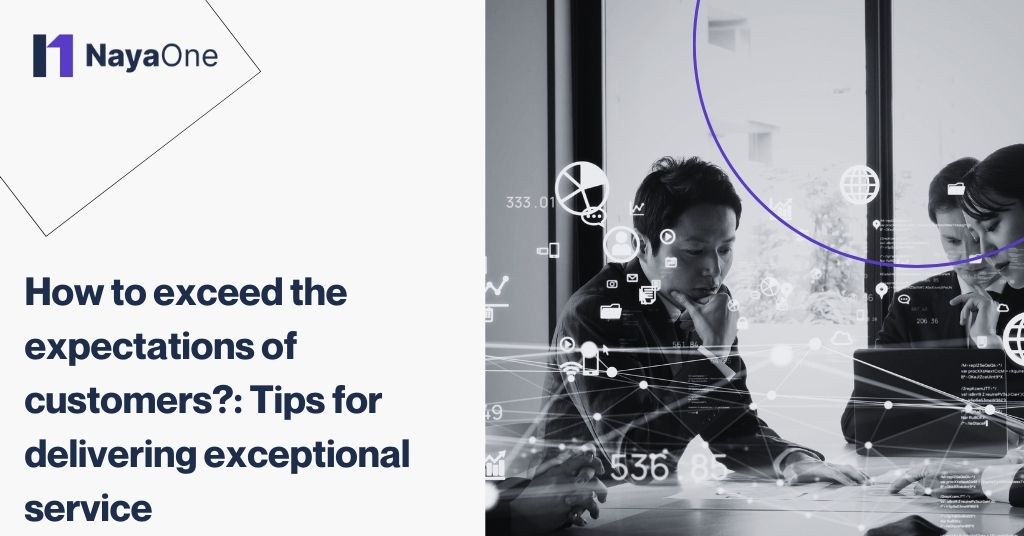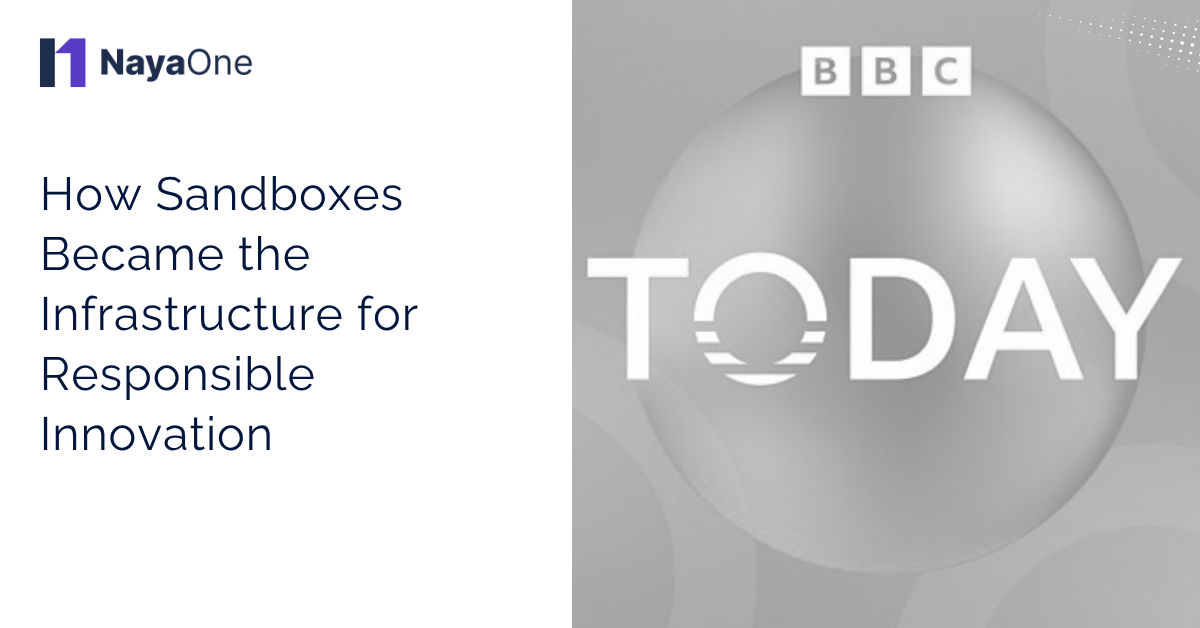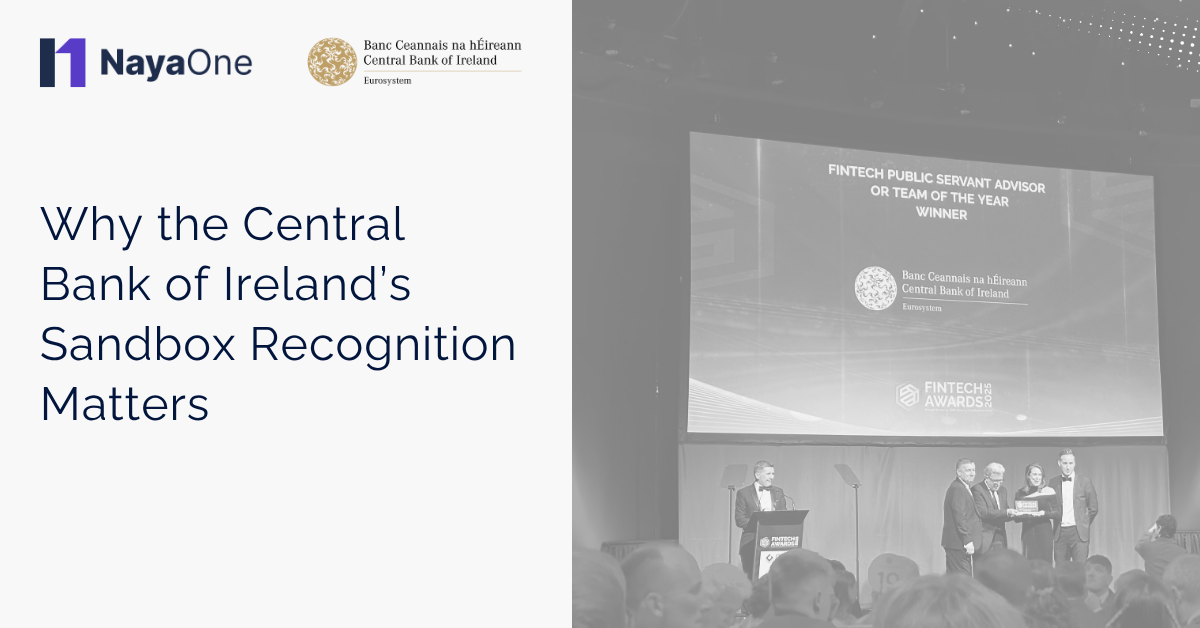Exceeding the expectations of customers is not just about providing good service—it is about creating memorable experiences that drive loyalty and long-term success. Yet, just over 40% of brands or businesses consider themselves “very successful” at identifying and addressing key areas of CX, such as being present at every point of need and staying connected to the customer’s voice.
Businesses that go beyond expectations build stronger relationships and set themselves apart in competitive markets. With AI playing an increasing role in CX—77% of CRM leaders expect it to handle most ticket resolutions by 2025—there is a clear shift towards smarter, more responsive service. This evolution also ties into consumer duty and responsible service, ensuring businesses meet customer needs with transparency and efficiency, much like NayaOne’s commitment to innovation and customer-first solutions.
How to understand the expectations of customers?
Expectations of customers are evolving, and businesses that understand and adapt to these shifts gain a significant advantage. At a baseline, customers expect reliability, efficiency, and clear communication. Meeting these expectations keeps businesses competitive, but exceeding them is what builds lasting loyalty.
The difference lies in proactive and personalised service. While meeting expectations means delivering what was promised, exceeding them involves anticipating needs and adding value at every touchpoint. AI is playing a key role in this transformation—86% of CRM leaders say it has made customer correspondence more personalised, and the same percentage report that AI has helped scale their operations.
Personalised, proactive service fosters deeper connections, turning one-time interactions into long-term relationships. Whether through AI-driven insights or human-led initiatives, businesses that prioritise exceeding expectations create a customer experience that stands out in an increasingly competitive market.
What are the key strategies for delivering exceptional service?
Customer experience is at the heart of customer retention, and anyone working in consumer-facing industries knows how crucial it is to stay competitive. Research shows that existing customers spend 31% more than new ones, and even a 2% increase in customer retention can generate the same profit as cutting costs by 10%.
To deliver exceptional service and build long-term loyalty, businesses can focus on these key strategies:
Active listening and personalisation
68% of companies say their personalisation efforts have exceeded targets.
Customers want to feel valued, not just like another transaction. Personalisation—whether through tailored recommendations, remembering preferences, or responding to specific needs—creates a stronger emotional connection. Businesses that listen, collect feedback, and use it to improve their services build lasting relationships and improve customer satisfaction.
- Tailoring experiences to individual customer needs.
- Using feedback to refine and improve services.
2. Proactive problem-solving
70% of consumers are motivated by problem-solving when engaging with businesses.
Customers do not just want a product or service—they want solutions to their challenges. Businesses that anticipate potential issues and offer proactive resolutions gain trust and credibility. Instead of waiting for complaints, brands that identify and address concerns early can turn potential frustrations into positive experiences.
- Addressing concerns before they become complaints.
- Offering solutions, not just responses.
3. Speed and efficiency
75% of consumers rank fast response times as the most important aspect of their experience.
In today’s fast-paced world, customers expect quick and seamless interactions. However, speed should not compromise quality. The best businesses balance efficiency with accuracy, ensuring that customers receive fast and effective support.
- Ensuring quick and seamless service.
- Balancing speed with quality to maintain trust.
4. Going the extra mile
61% of consumers are willing to pay at least 5% more for a great customer experience.
Exceptional service is not just about fixing problems—it is about creating memorable moments. Small, thoughtful gestures can turn an ordinary transaction into an outstanding experience, fostering loyalty and advocacy.
- Small, thoughtful actions that leave a lasting impression.
- Examples of businesses that have successfully exceeded expectations.
5. Transparency and trust
94% of consumers are more likely to be loyal to brands that commit to full transparency.
Trust is the foundation of customer relationships. Businesses that communicate openly, set clear expectations and take responsibility when things go wrong to earn stronger customer loyalty. Honesty builds confidence—customers want to know they are dealing with a company that values integrity.
- Keeping customers informed and setting realistic expectations.
- Owning mistakes and making things right.
By prioritising these strategies, businesses can turn satisfied customers into loyal advocates, setting themselves apart in an increasingly competitive market.
What is the role of technology in customer satisfaction and service?
Investing in customer experience is not just about meeting expectations—it is a proven driver of business growth. Research shows that companies earning $1 billion annually can expect to generate an additional $700 million within three years of enhancing their customer experience.
Technology plays a crucial role in this transformation, improving service delivery in several ways:
- AI and automation : Streamlining responses, predicting customer needs, and handling routine tasks efficiently.
- Chat support and self-service options: Providing instant, 24/7 assistance while freeing up human agents for more complex issues.
- Data and analytics: Helping businesses personalise interactions and refine their services based on real customer behaviour.
However, technology alone is not enough. The key is finding the right balance between automation and human interaction—ensuring that digital tools enhance, rather than replace, meaningful customer engagement.
A 5% increase in customer retention can lead to a 25-95% increase in profitability, making it essential for businesses to continuously refine their customer experience. Tracking key metrics such as:
- Customer satisfaction score (CSAT): Measures how happy customers are with a service or interaction.
- Net promoter score (NPS): Gauges customer loyalty and willingness to recommend the brand.
- Customer effort score (CES): Evaluates how easy it is for customers to get their issues resolved.
By leveraging technology while maintaining a human touch, businesses can create a seamless, personalised experience that drives both customer satisfaction and long-term success.
Elevate the expectations of customers for real growth with NayaOne
Customer experience is not just a service function—it is a growth driver. 84% of companies that invest in improving their customer experience report increased revenue. Businesses that treat customer service as a value centre rather than a cost centre see 3.5 times greater revenue growth.
At NayaOne, we understand the power of exceptional service. From cutting-edge technology to responsible innovation, we help businesses stay ahead by enhancing customer experience and meeting evolving consumer expectations—all while upholding consumer duty.
How are you shaping your customer experience strategy? Share your thoughts, engage in discussions, or explore our insights on consumer duty and responsible service. Let us build a smarter, more customer-centric future together.
FAQs
Accordion Content
Customers value fast service, but speed should not come at the expense of quality. The best experiences balance efficiency with accuracy, ensuring issues are resolved properly the first time.
Customers expect their feedback to be heard and acted upon. Businesses that actively seek, acknowledge, and implement feedback build stronger trust and improve customer loyalty.
Customer expectations evolve based on technological advancements, industry standards, and cultural shifts. Businesses that stay ahead of these changes by listening to feedback, adopting new technology, and continuously improving will maintain strong customer relationships.






